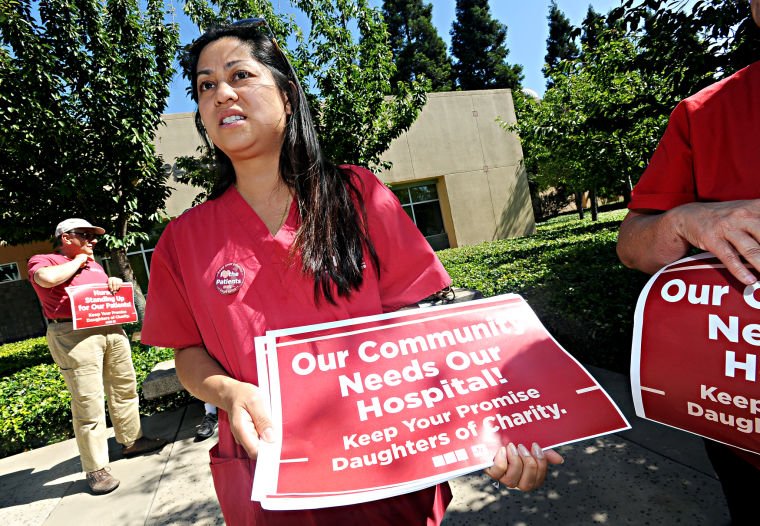On the heels of a letter sent by City Council and the Cities Association of Santa Clara County, Assemblyman Luis Alejo recently met with local officials and listened to concerns about a double-digit increase in crime in Gilroy associated with Assembly Bill 109 – the Public Safety Realignment Act.
A new bill, Assembly Bill 1449, is gaining support in Gilroy and across the County. It’s geared toward helping reverse the rise in crime rates across the state resulting from a 2011 California law that shifted inmates from state prisons to county jails – and then supervised by county parole officers.
On Thursday night, the Cities Association voted to formally endorse AB 1449, according to Legislative Action Committee Chair Peter Leroe-Muñoz.
According to Gilroy Police Department Chief Denise Turner, AB 1449 is a “step in the right direction” toward counteracting some of the challenges local municipalities have faced since AB 109 first took effect.
By the one-year anniversary of realignment, between October 2011 and October 2012, a jump in violent crimes, property crimes, drug-related crimes and gang activity accounted for a 19 percent increase in crime – in Gilroy alone.
More than 9,000 felons have been released through AB 109 in California since realignment came into effect and 87 have located to Gilroy, according to GPD Crime Analyst, Records and Property Manager David Boles. Of those released through realignment, 38 have been arrested and six have active arrest warrants as of Wednesday, he added.
Introduced by Assemblyman V. Manuel Pérez, D-Coachella, AB 1449 would prohibit the transfer of inmates from state prison to county jails. As it stands now, if felons are convicted of a non-violent, non-sexual offense, they are required to serve time in county jails instead of in state prisons.
AB 1449 would also require that offenders serve an automatic one-year state prison sentence if they violate the terms of their parole three or more times. As a result of realignment, all parole violators serve up to six months in county jails and never in state prison. Though penalties can become harsher after multiple violations, parole violators are typically among the first to be released.
“That makes sense because the local facilities were not built to house inmates for more than a year,” said Leroe-Muñoz, Gilroy City Councilman and former San Benito County Deputy District Attorney.
In his eyes, the California prison system is “better equipped” and “has the resources” to house inmates for the long-term.
Realignment was originally the state legislature’s answer to a May 2011 U.S. Supreme Court ruling demanding a 25 percent reduction in the prison population to address overcrowding.
The parole revocation process now takes place at the local court level, rather than at the state level through the Board of Parole Hearings, according to the California Department of Corrections and Rehabilitation.
Realignment instructed local courts to only examine a criminal’s current offense when determining if he or she is fit to be released with county supervision. AB 1449 would change that, too.
“It will allow for the whole criminal history to be considered before the inmate is released back to the community, versus being released on the last infraction or crime,” Turner noted. “They also are going for more local funding to help offset costs to local police agencies for the shift of workload these inmates are causing.”
A criminal recently convicted of a non-sexual or non-violent felony could have a serious felony in the past – from attempted murder to rape – but through AB 109, that history is left out of the discussion whether someone is eligible for parole release.
“People like that are reporting to county probation officers and the problem with that is the probation officers are being overworked,” Leroe-Muñoz said. “Somebody who has a serious criminal history is going to require more supervision than somebody with a less serious past. It’s an absolute strain on probation officers and local resources.”
Two years into realignment, Pérez says the state legislature needs to make “some mid-course corrections to assist local jurisdictions and ensure public safety.”
To keep tabs on the 82 offenders released through realignment, the GPD has tasked the force’s Anti-Crime Team – typically involved in gang suppression – with monitoring parolees once they enter Gilroy.
“Occasionally, they will do compliance checks, which, again, remove the (team) from doing what they’re supposed to be doing,” GPD Sgt. Pedro Espinoza said. “They go out there and make sure that these guys, when they do get out, are doing what they’re supposed to be doing pursuant to their release.”
Until the state responds to the concerns of Gilroy authorities, GPD Sgt. Joseph Deras, who heads the Anti-Crime Team, and his staff of six will still be keeping eyes on the criminals released to Gilroy between their usual calls for service and gang suppression responsibilities.
“These people aren’t minor violators. In most cases that the Anti-Crime Team deals with, these guys are heavy hitters,” Deras said. “They’re not your check fraud guys; they’re your gang members, drug dealers – and a couple of these guys were involved in car chases, guns and narcotics. They’re serious and violent felons.”
The Cities Association of Santa Clara County voted Thursday night to endorse AB 1449, according to Legislative Action Committee Chair Peter Leroe-Muñoz.















